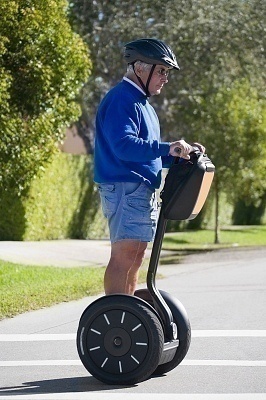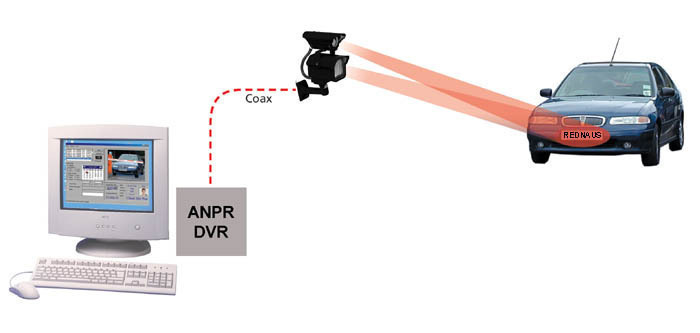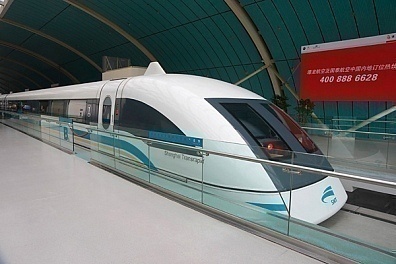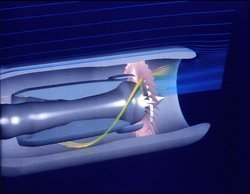A Segway is a vertical, mobile vehicle that is able to carry a single person between distances. While a bicycle consists of two wheels and a horizontal frame, a Segway consists of two or four wheels and a vertical frame that balances atop these wheels to steady the rider. Segways run on purely electrical energy and can be taken anywhere pedestrians can go. Segways are large enough to transport a person and yet light enough to carry in one arm.
Dynamic Stabilization
Dynamic stabilization involves the use of sensors that are able to detect when the Segway has tilted too far in either direction and motors that are able to tilt the Segway back into a proper balance. This can be maintained as long as the Segway remains on, even while the rider is not on it. Thanks to onboard computer systems, dynamic stabilization is nearly perfect and allows riders to travel at speeds up to 12.5 miles per hour without ever falling over.
Electric Propulsion
Electric propulsion is the concept of using electricity to move a vehicle rather than burning fossil fuels. Electric propulsion is ideal for Segways because it allows for very little or no pollution, is renewable, and is relatively cheap to produce. Electric propulsion systems can be made more efficient by simply rerouting or redesigning electrical grids or modifying the electrical power source. While some electric propulsion systems use solar power or other means of electrical generation, the electric propulsion system found in a Segway is simply a well-designed battery that can be charged by plugging the Segway into any wall outlet.
Smart Battery
Segways, like many modern appliances, include a “smart battery”. A smart battery is a battery that includes a computer chip that allows the user to see how much power the battery has left. This is a very vital function in Segways because the user would have no idea how long they have been riding, how much further can still ride, or how long the battery needs to charge. While many devices such as laptop computers, digital cameras, and even cell phones have smart batteries in them, the smart battery found in a Segway is able to recharge itself while the vehicle is decelerating, therefore converting all of the otherwise wasted kinetic energy back into electrical energy and allowing the battery to last longer.
Drive-By-Wire
Drive-by-wire is a new type of technology that allows moving parts in a vehicle to be controlled by a combination of actuators, emulators, and user interfaces rather than many mechanical parts such as valves, gears, pumps, hoses, and belts. Drive-by-wire allows users to have a much safer, more comfortable, and more ergonomic ride because the entire system is much more accurate in the way that it controls the Segway. This means that the Segway can start and stop faster, take sharper turns, and handle rougher terrains than traditional systems.
User Interface
All Segway models have a built-in user interface that displays the user’s speed, battery power, distance travelled, and how much more distance the Segway will gain before its battery dies. The Segway user interface is very easy to toggle through and can be used while driving. The user interface is very important as it also functions as the primary control system for the entire Segway. Without this system, the Segway would be virtually useless as it would not be able to receive input from the user.




Follow Us!